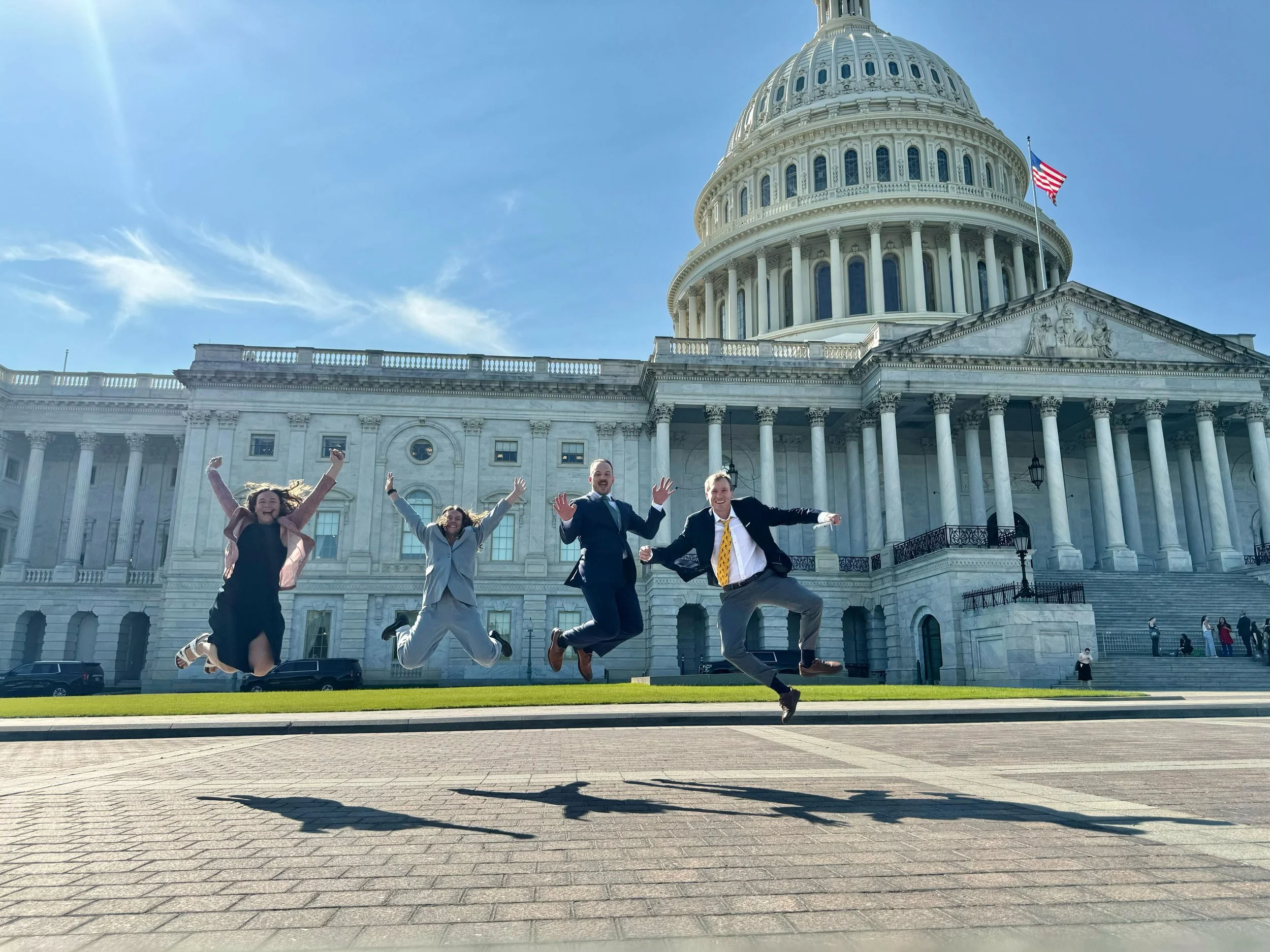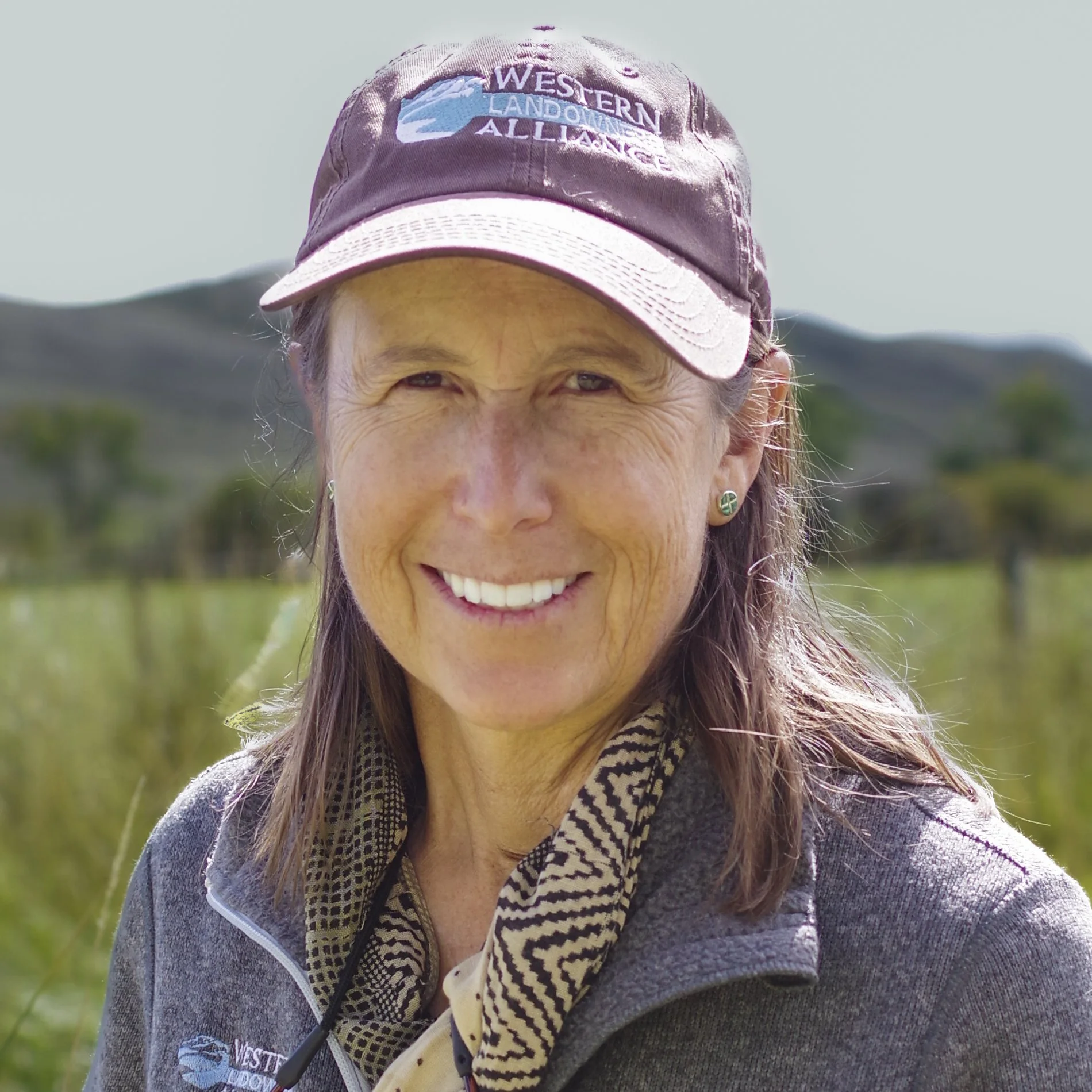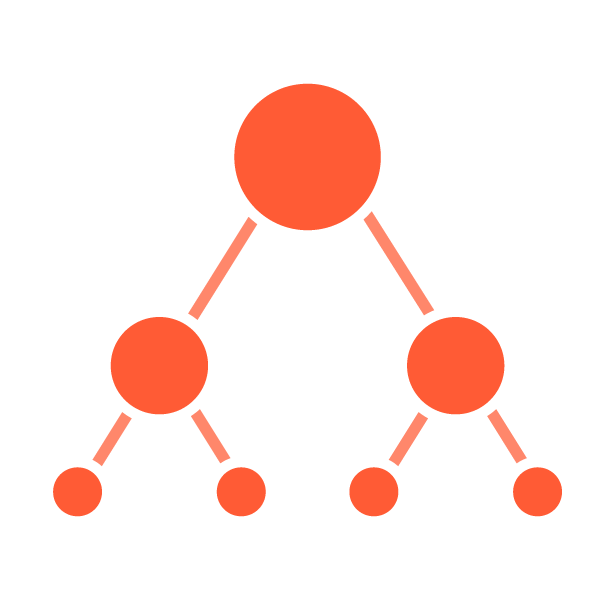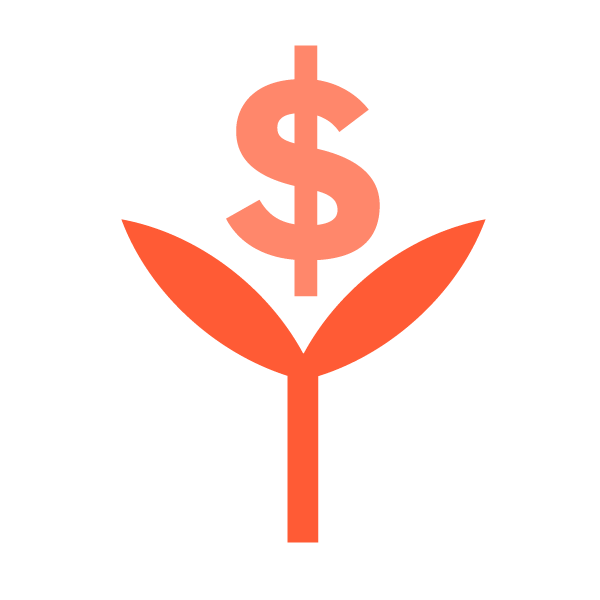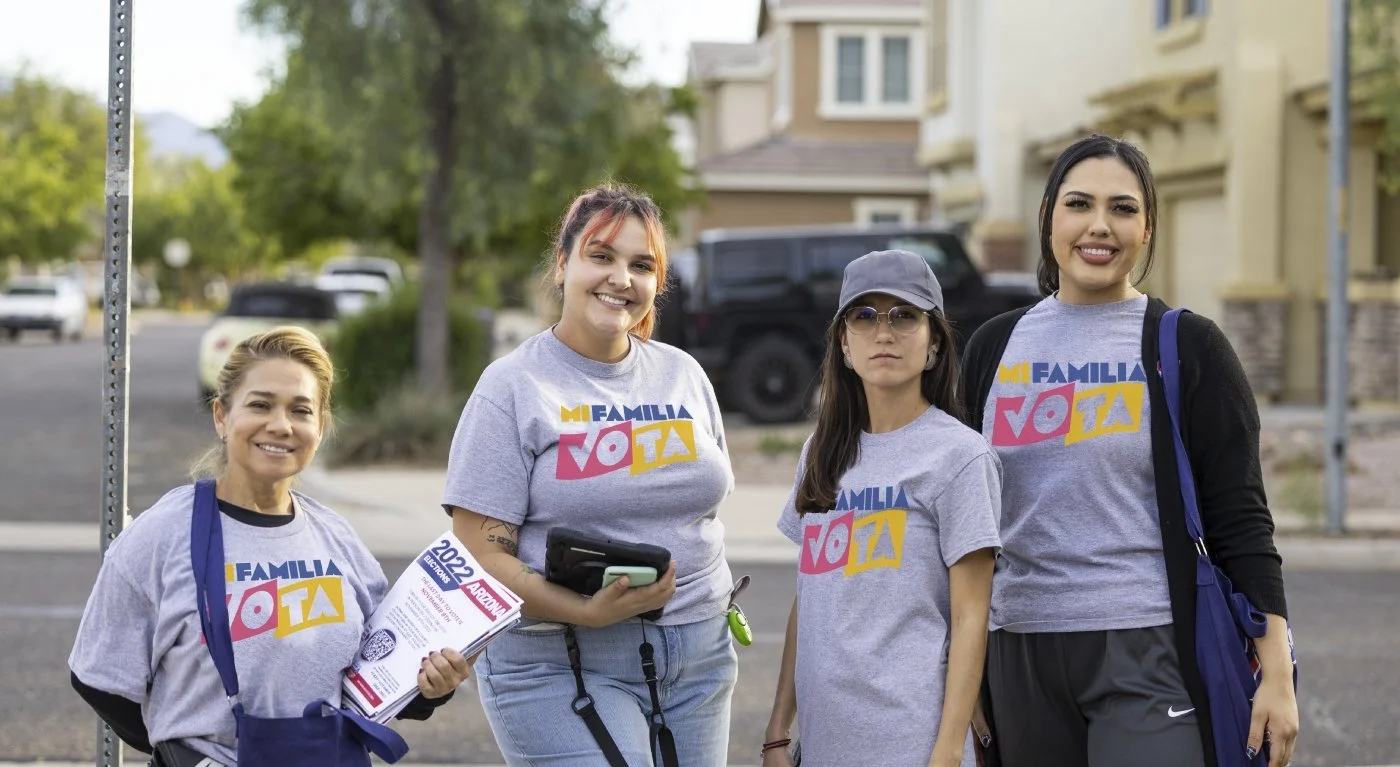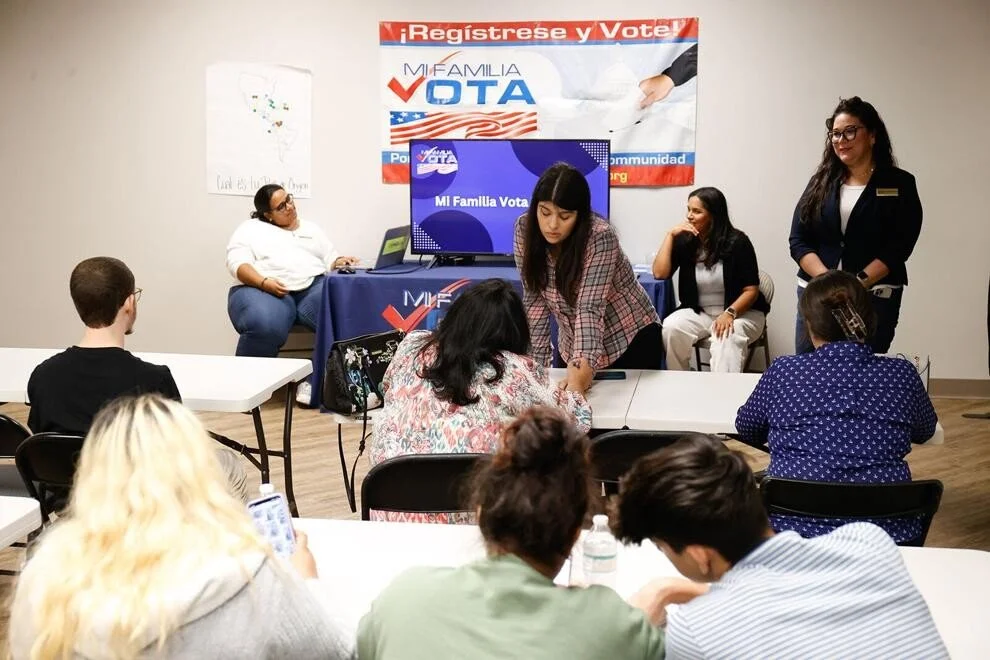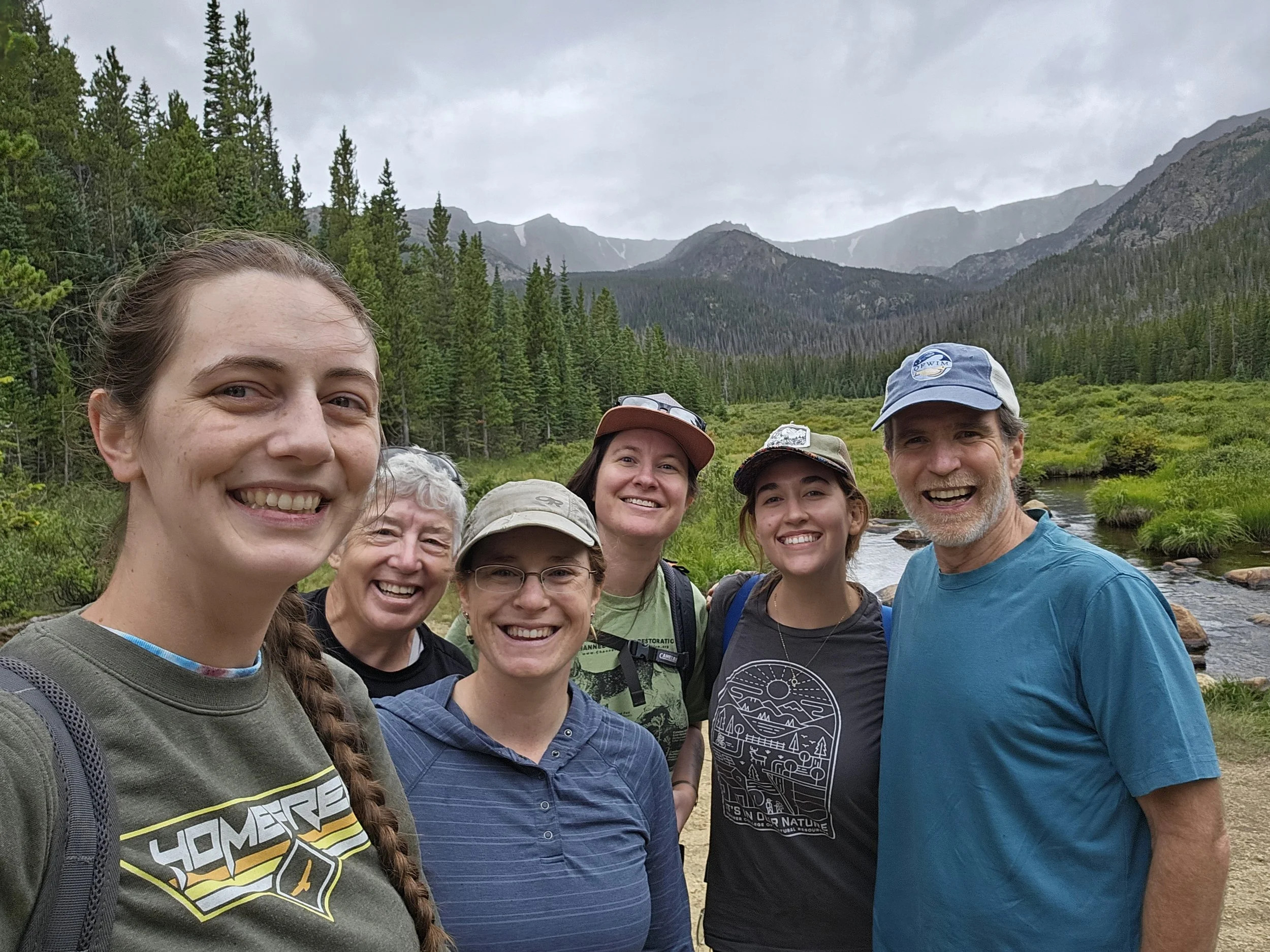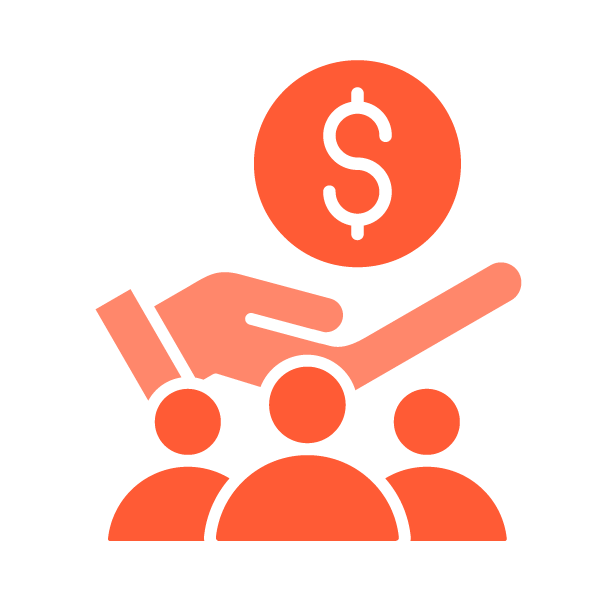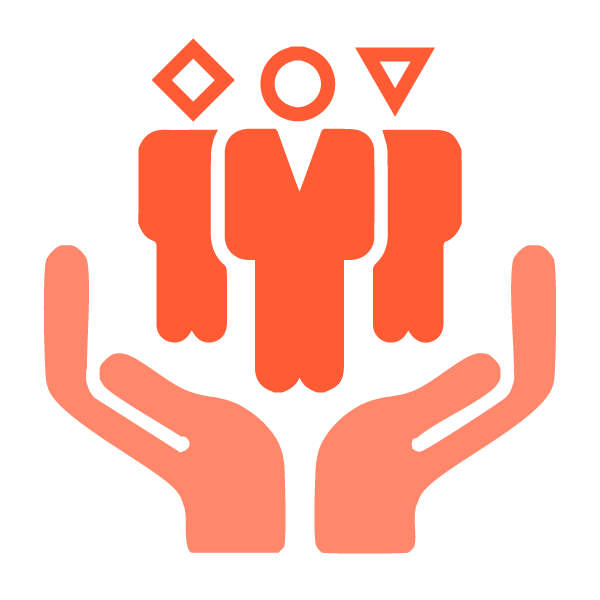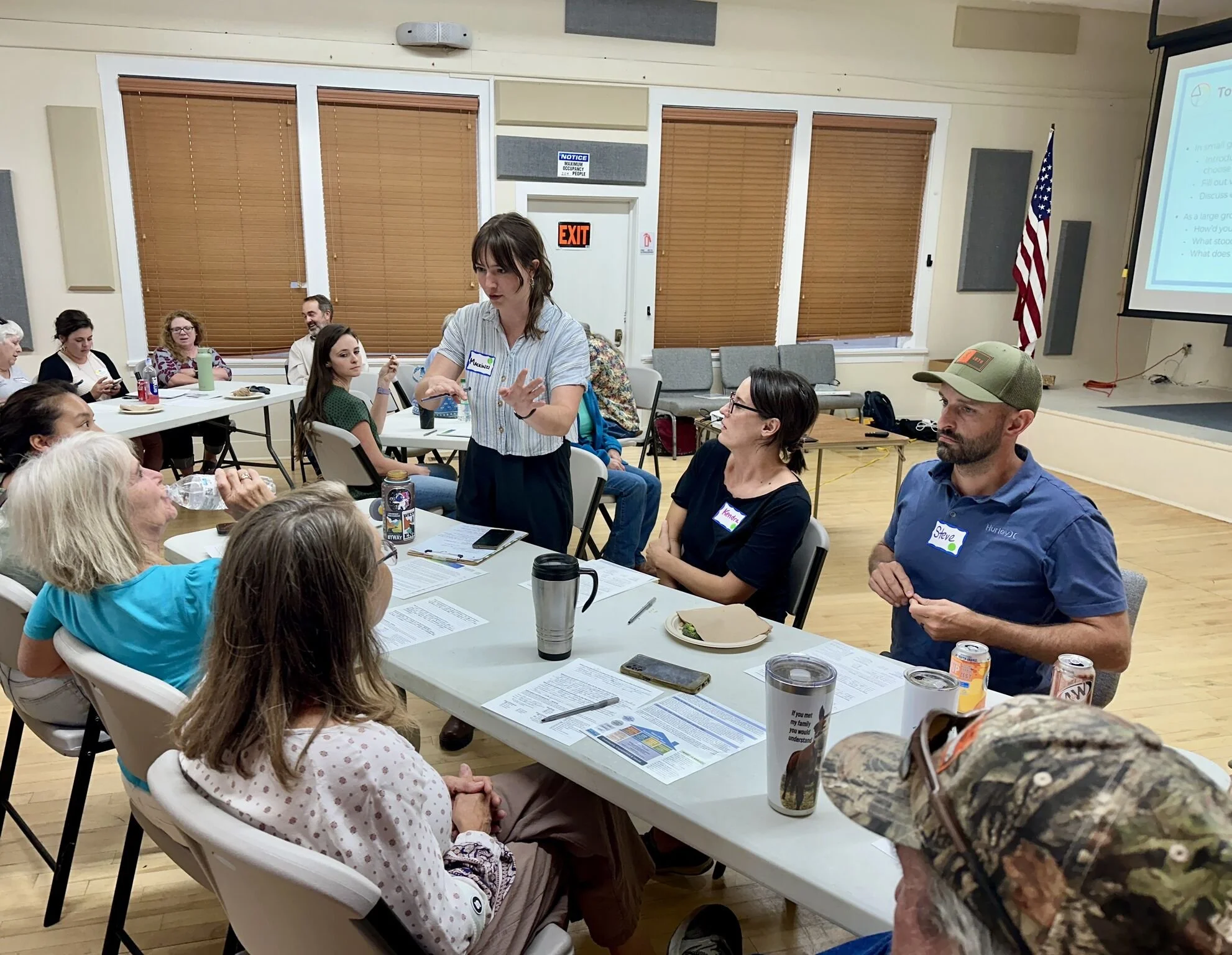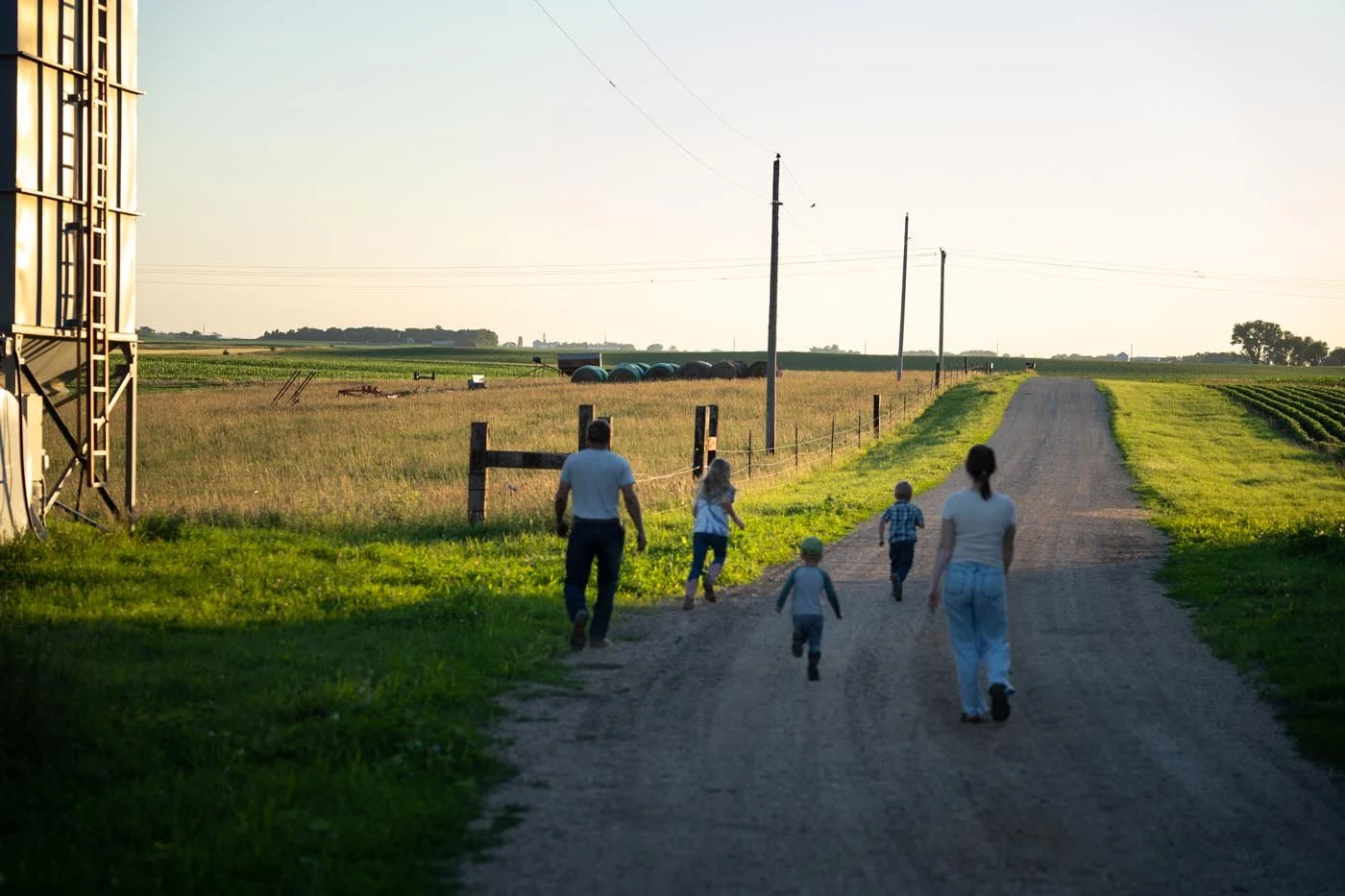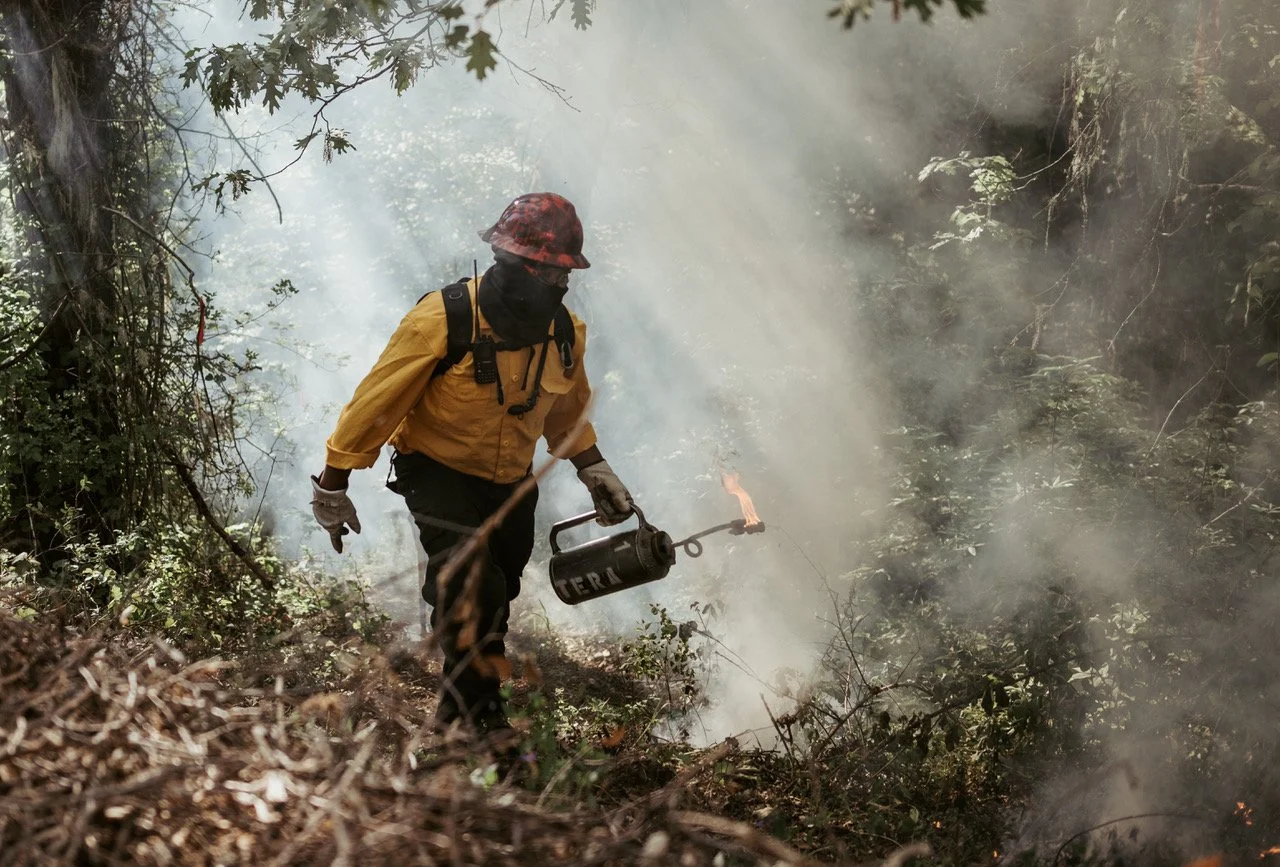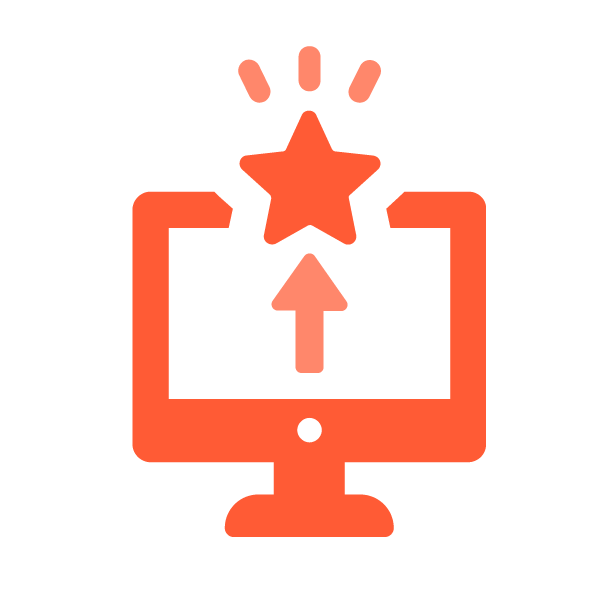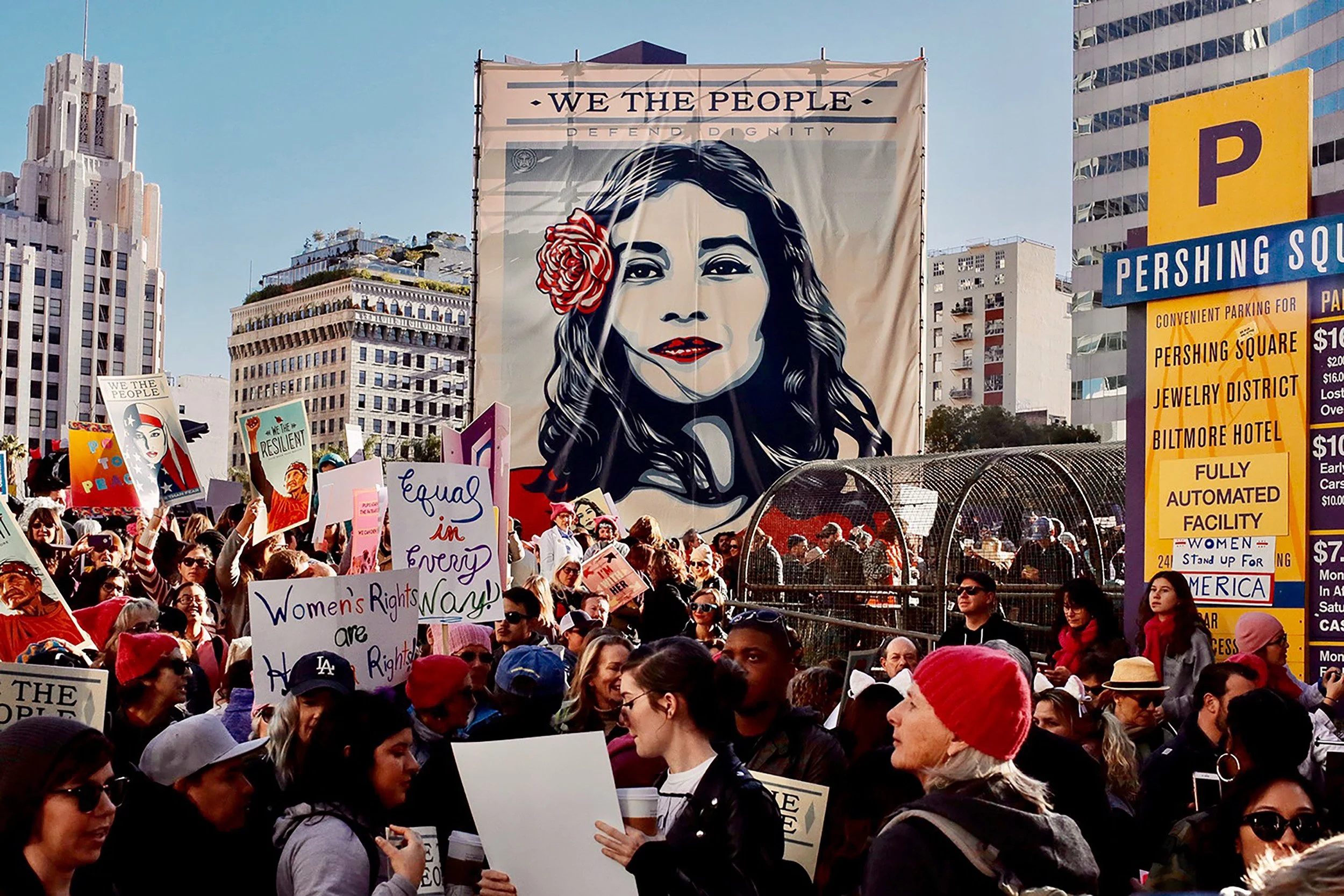
MIGHTY PARTNER Project
2025
What we learned from listening
We began with a question: How do we, as funders, take better care of the people doing this work?
Rather than answering that ourselves, we posed that question to our existing community of grantees—remarkable individuals and organizations we call our Mighty Partners—and agreed to let those answers help guide us.
We started this project in April of 2024, because we wanted to listen to our partners. As we check in with ourselves and the state of things today, we realize the messages our partners shared are more important than ever. These big, complex problems demand an abundance of compassion and action on an unprecedented scale, and we need to think differently about how we approach the solutions. And at the end of the day, it’s the people who are doing this work. It’s the people we connect with who ultimately inspire us to think, act and give. And in this system of philanthropy that we are so fortunate to be a part of, we can always do better. I believe it’s the people we need to invest in, to nurture our leaders, so they can continue to hold up the light. These are ordinary people doing extraordinary things.
That’s why Mighty Arrow is launching two new pilot project funds beyond our existing grantmaking: the Nurturing Leadership Grant, aimed at investing in our current Mighty Partners and their teams, and the Transformational Capacity Grant, which will break down traditional barriers to foundation funding by creating a Mighty Partner-referral application for emerging organizations.
We’re in a defining moment—a moment where we can choose to be overwhelmed, disconnected and discouraged, or where we can choose to lean in, shoulder confidence for each other and lift up the work of those seeking a better future together. We’re proud to support the work of the people and organizations out changing this world for the better—for all of us. Some may be small, some large. All are Mighty Partners.
It’s from those conversations that we launched the Mighty Partners Project, a year of listening sessions and research. This report anchors a renewed and deepened effort to build community, gather resources, bolster support and galvanize collective power. Thank you to our Mighty Partners for the time and the honest input that has guided this report and the expanded actions and conversations to come.
To my fellow funders, I ask you this question: How do we take better care of the people doing this work? How can we be better partners in this work? We spent a year intentionally listening to what partners had to say. Here’s what we learned—and what we’re going to do about it.
Jordana Barrack, Executive Director, Mighty Arrow Family Foundation
EXECUTIVE SUMMARY
In 2024, the Mighty Arrow Family Foundation, in collaboration with strategic communications from Under Solen, launched the Mighty Partners Project—a comprehensive, human-centered effort to refocus the foundation’s philanthropic strategy. Guided by the question, “How do we, as funders, take better care of the people doing this work?” the Mighty Partners Project is rooted in the belief that strong connections and a sense of community are vital for real, lasting change. And so, instead of answering this question internally, Mighty Arrow instead listened to what its grantees—its Mighty Partners—had to say. This inaugural effort represents a multi-year commitment to reimagining traditional funding practices, amplifying partner stories, and investing in the well-being and resilience of leaders and their teams.
Through listening sessions, surveys, and one-on-one interviews with 64 leaders from 56 organizations, clear priorities emerged: 100% of participants voiced a strong desire to collaborate within the Mighty Partner community, with the vast majority offering to extend their own expertise and support, though many have varying perspectives on its execution. Additionally, more than 95% participants noted that the traditional funding cycle presents significant challenges for long-term planning and resilience in a rapidly changing world, with connections to other funders and unrestricted, multi-year funding topping the list as opportunities to shift this cycle.
Mental health and well-being are serious concerns, with a focus on creating work cultures that prioritize staff safety, rest and support. However, even with support efforts in place, 83% of respondents note burnout personally, and 78% note burnout with their teams.
Compounding capacity challenges also emerged as a significant theme, with organizations identifying limited access to unrestricted funding and rising operational costs as key barriers to retaining staff and achieving long-term stability. Partners expressed a need for external expertise—such as access to HR, legal, tax and financial support—to enhance organizational capacity and strategic growth.
This report delves deeper into these findings, offering insights and opportunities to strengthen partnerships, foster community, and create a funding culture that supports the people creating a brighter future for all of us.
Of the Mighty Partners surveyed:
100% voiced a strong desire to collaborate.
95% emphasized value of unrestricted, multi-year funding.
83% noted burnout, personally.
78% noted burnout within their teams.
Diverse and Impactful: The Scope of Mighty Partners
The geographic focus of Mighty Arrow’s grantmaking is broadly the Western US with more pinpoint focus on the Bay Area of California, Colorado and the Intermountain West. Mighty Partners operate across three interconnected focus areas, with annual revenue ranging from $500,000 to more than $300 million.
Focus Areas:
Protect Ecosystems
Health and well-being depend on vibrant environments—from urban parks, untouched wilderness or working farms.
Amplify Human Power
People are the greatest catalysts for meaningful and lasting change—and a brighter future for all of us.
Build For The Future
Forward-thinking solutions, ensuring that progress benefits everyone, not just a select few.
Photo: Western Landowners Alliance
OPPORTUNITY
What’s Working Now?
Partners across the board highlighted Mighty Arrow’s current practices that extend the financial investment received with their current grants, including:
Multi-year support and unrestricted funding.
Matching grants (and creating opportunities for matching funds, but not pooled funds).
Light and accessible reporting requirements.
Support with travel expenses and convening.
Strategic check-ins that foster dialogue, advice and input.
Amplifying storytelling and highlighting work to other Mighty Partners and funders.
Moral support through gifts and kind notes.
Offerings like the Mighty Partners Project and smaller convenings that provide space for input and that emphasize that their work—and they—matter.
This response from participants shines a light on an opportunity to continue to step into our role as funders to encourage others in the community to adopt similar practices—and go deeper—something Mighty Partners resoundingly support.
Many of Mighty Arrow’s best practices align with the principles of Trust-Based Grantmaking.
1. Shifting the Culture of Giving
“The highest and best use for all philanthropy is to give unrestricted operating support.”
Photo: SPUN
Kristine Ziegler, Co-Founder and Special Advisor to the Board of Planet Women
Nearly every participant noted that the traditional funding cycle presents significant challenges for long-term planning and resilience in a rapidly changing world. Leaders express feeling daunted with the inconsistency in funder priorities and strategies, making it difficult to align short-term goals with long-term strategic plans. Overall, a need was expressed for more human relationships in the philanthropy experience—which respondents said ultimately seems to work better for everyone. Unrestricted, flexible and multi-year funding is highlighted as a critical need to ensure organizational sustainability, health, meaningful growth and ultimately lasting impact.
Partners are interested in rethinking how nonprofits and funding are structured, looking for creative ways to shift to a longer-term mentality so organizations can continue work strategically—and for the long haul.
Additionally, almost all respondents expressed a strong interest in networking and building connections with other funders. By fostering these relationships, funders can encourage knowledge sharing and collaboration, enabling organizations to benefit from a broader range of insights and support.
It should be noted that it’s not solely this group who has voiced concerns about the traditional funding model. A recent article from Stanford Social Innovation Review, titled Where Strategic Philanthropy Went Wrong asserts that the strategic philanthropy model is not only ineffective, but, despite best intentions, is still inherently problematic, as its philosophies are rooted in outdated thinking that those in need “...cannot be expected to know what they need to improve their lot or be trusted to use unrestricted funds responsibly.” They propose empowerment philanthropy as a new approach, a model in which “...instead of making choices for other people, philanthropists must learn to empower individuals economically and politically to make choices for themselves and then celebrate their successes to inspire others, thus opening a far more pivotal role in fast-tracking widespread, lasting social and environmental progress.” The article goes on to provide proof points on the efficacy of unrestricted funds. For example, GiveDirectly’s distribution of $580 million in unrestricted cash transfers has resulted in documented improvements in savings, nutrition, education and mental health, as well as reductions in stress levels, child marriages, teenage pregnancy and domestic violence in the recipient population. The call for unrestricted funding asserts that philanthropy may be most effective when the funder’s role is “... to create and sustain the conditions through which stakeholders can generate their own solutions.”
Long-term view—and funding—holds stronger in a changing environment
Funders have the opportunity to create change in a bigger way by influencing other funders to shift to a more human, relational and trust-based style of philanthropy. Urging others to award more multi-year grants and be flexible with applications and reporting processes can help break down barriers to funding. Additionally, the opportunity to provide matching grants encourages this shift—and has a multiplying effect. Shifting to a long-term approach, building relationships and urging other funders to do the same can help guarantee organizations can grow in a healthy, supported way and make sure their critical work stands the test of time.
Photo: Amplifier
SPOTLIGHT
Outdoor Alliance
Photo : Outdoor Alliance
Nonprofits aren’t taught they can ask a funder for a multi-year commitment. When Mighty Arrow issued the challenge to double down on our existing grant to Mighty Partner, Outdoor Alliance—provided they could secure another donor willing to commit to a multi-year grant—it gave them the confidence to approach funders with a bold request for multi-year commitments. As a result, our $50,000 grant leveraged an incredible $500,000 in additional matched funding over multiple years.
“Mighty Arrow was refreshingly upfront about their goal to inspire other funders to commit to multi-year grants. They offered to double our MAFF grant if we secured multi-year support from other funders—a challenge we met successfully. The additional resources we secured were critical to our mission work, and it was meaningful to play a role in helping the Mighty Arrow Family Foundation team shift foundation norms to do more good.”
— Adam Cramer, CEO of Outdoor Alliance
Build and foster relationships
Multiple respondents pointed to the benefits of a more relationship-oriented connection to funders. Shifting to more personal connections can help smooth application and reporting processes. Having an ongoing personal relationship can also open doors for funders to fill needs that grant partners might otherwise not feel empowered to express because they don’t fit under specific existing grants. This also allows flexible funding for needs as they come up, like hiring a consultant, creating an internship or holding a retreat, for example.
“Because we are in multi-year commitments, our check in conversations and reporting doesn't have to be a superficial conversation about what our partners think we want to hear, hiding challenges, or still trying to impress us in order to get the next grant. We are already locked into a multi-year contract for funding, we're not going anywhere, so let's get down to the real candid conversation so we can walk with our partners as they work through the tough challenges or pivots within their work.”
— Jordana Barrack, Executive Director of Mighty Arrow Family Foundation
Break down barriers to funding
A powerful way funders can support grantees’ work is by connecting them to other funders; 100% of respondents expressed interest in opportunities to network with additional funders as a way to boost organizational credibility and break down barriers. It also saves them valuable time and energy required to find potential funders in the first place, let alone begin the painstaking process of building interest and trust that may lead to eventual support. Respondents report that simply making introductions for new grant opportunities is incredibly helpful. Word of mouth connections and referrals may be the most simple and powerful way to shift funding culture.
Amplify partner work
Aside from introductions, sharing partners’ work with other funders or amplifying storytelling efforts within the community goes a long way with one respondent saying, “Uplifting and amplifying the work of organizations is huge.” Using funder-driven resources to boost partners’ messaging and storytelling builds credibility, buy-in and potentially helps partners connect with more funding, ultimately building a broader, engaged community around change-making work.
Support operations for the long haul
One of the most common pain points discussed by respondents is the hamster-wheel nature of short-term and project- or initiative-based funding. They note it’s very difficult to grow if they are not certain that the same funding will come in after the first grant cycle, and very few campaigns or substantive changes happen in a short timeframe. Shifting to more long-term relationships and focusing on enduring support of operations helps keep long-term work possible, productive and ultimately successful.
“While the changes can feel incremental in any given year, what we do in changing policy and broader systems level engagement, is really long-term work. We tend to see a lot of short-term or just very project-oriented thinking in what gets funded. That's honestly one of the biggest challenges to our success.”
— Aria McLauchlan, Co-Founder and Executive Director of Land Core
Lighten the reporting lift
This folds into the idea of relationship building. A helpful change funders can make is to create less burdensome requirements for proposal writing and reporting, for example reducing frequency and allowing grantees to reuse material from other funders rather than require a unique format. Additionally, allowing various formats of reporting provides partners with an opportunity to communicate in a way that feels best for them, whether that be a phone / video call, written report or a brief video explaining how they’ve put the grant to use. Building and maintaining stronger relationships with organizations can help fill the role of increased reporting.
SPOTLIGHT
The Trust-Based Philanthropy Movement
Mighty Partner Trees, Water & People speaks to how they have shifted their approach to working with funders, sharing that “Lasting change is built on relationships, and relationships are built on time. With donors who’ve invested in both, we’ve been able to reimagine the scale of our impact... We make the case for philanthropy that recenters communities, focuses on relationships, and thinks long-term.” As a part of their effort to encourage other funders to become a part of the momentum towards trust-based philanthropy, Trees, Water & People produced a new film, In The Right Hands, which explores the topic and movement with their community of funders.
"I'll just start with the trust-based philanthropy experience. It's been great to create a more human relationship and a more horizontal relationship with funders, having mutual respect and giving each other space to deal with the challenges inherent to our work in a way that works best for everyone."
— Sebastian Africano, Executive Director of Trees Water People

2. Connection, Collaboration and Convenings
"Without a clear purpose, collaboration for the sake of collaboration rarely works. It consumes valuable time we don't have to spare from our other work. When collaboration is done in a way that advances specific shared goals, then it is extremely helpful."
Lesli Allison, Founding Member and CEO of Western Landowners Alliance
While 100% of participants voiced a strong desire to collaborate within the Mighty Partner community, many voiced a hesitance surrounding cohort and convening models due to capacity constraints and the sheer number of existing events. Vital findings include the need for flexibility, including optional attendance, allowing staff beyond leadership to attend, and a well-coordinated and dedicated team handling pre-event planning, facilitation and follow up, as is the option to fund ideas emerging from these gatherings for long-term impact.
A significant interest exists in creating smaller, one-on-one conversations that can lead to broader networks, as well as tighter cohorts for specific roles or discussions. One such cohort would serve executive directors, with one respondent sharing that “it is no longer sustainable for me to carry this work in addition to my other responsibilities.” Partners also spoke to a need to invest in leadership challenges like succession planning and team well-being and noted that coaching, peer support and expert facilitation are highly valued in this space.
Gatherings need to be flexible about the “who” and “how” of attendance
“Our movement is at a point where investing in leadership pathways is of utmost importance. As organizational transitions or unexpected crises happen, we have to ensure that front line staff all the way up to directors are equipped to lead. Our ultimate goal is to not just strengthen our organization, but ultimately the bench of leaders who will contribute to the organizational resilience in the larger ecosystem over time.” — Alicia Olivarez, Executive Vice President of Power California
While grateful for opportunities, executive leadership reports being besieged with funder-driven gatherings, with one respondent saying that fulfilling foundation obligations can become a “full-time job.” While in-person is largely preferred, being open to virtual attendance for some events can help lighten the load while still providing the benefits of connection. Similarly, extending invitations to include staff beyond leadership can free up executives while helping build connections and experience in the up-and-coming generation of leaders.
Vital findings include the need for:
Flexibility (who/when)
Invites extended beyond leadership
Fund for emerging ideas
Well-coordinated and thoughtfully planned
Execution needs to be dialed and specific
“It's not often that we actually unplug from our constant research demands, to take time for reflection, self care, and non-technical (right brain) learning and thinking which often leads to "ah ha" moments and allows us to identify ways to operate more holistically and effectively. Having an organization that provides an opportunity for us to spend 1-2 days in this space, with other scientists, in addition to creatives, etc. would be wonderful!”
— Jennifer Watts, Arctic Program Director and Associate Scientist at Woodwell Climate Research Center
Nobody has time to waste. As one participant noted, collaboration is only helpful when it’s strategic—not just collaboration for collaboration’s sake. Survey respondents suggest that planning and investing in events’ execution with a mind for attendees’ true needs can make the difference. Key takeaways include the following:
Make attendance optional. Support those who can’t make it as much as those who can.
Create enough structure to hold the gathering, and allow enough space for rest, personal time and organic connection.
Support convenings in various formats; in-person and virtual.
Get specific about the gatherings; purpose, proposed outcomes and communicate agendas ahead of time so organizations can send the best person for specific areas of interest. Consider: Is this gathering about funders’ interest or designed to benefit the day-to-day work of the nonprofits?
Value time and travel expenses by leveraging existing events or gatherings to convene partners with tight budgets and bandwidth for focused discussions.
Ask attendees to rank their top priorities beforehand, or at the beginning of an event or networking period—and then organize connections or events to match.
Provide the potential to fund innovative ideas and collaborations that emerge from the gathering, investing in extending the convening beyond the actual event.
Invest in professional facilitation and stick to an intentional structure and agenda.
Purposefully follow up afterward with transcripts, recordings and connections to those at the event—and those who cannot make it.
“There were actually meaningful connections. They looked at everybody's trouble spots and everybody's wins, and they connected very thoughtfully.”
— Megha Kulshreshth, the Founder and CEO of Food Connect talks about a funder who, in advance of a gathering, asked attendees to fill out a survey to identify top needs and organized group discussions around those needs and group discussions were focused on them.
Photo: Food Connect
Cohorts can be helpful if they’re strategic
Again, participants voiced a general wariness around the idea of collaboration for collaboration’s sake—but significant interest in creating smaller, one-on-one conversations that can lead to broader networks, as well as cohorts for specific roles or discussions. Key takeaways include:
Listen first to what grant partners are asking for, then work with them to deliver.
Build intersectional cohorts—help connect unexpected allies in organizations that may otherwise not work together, encourage creative collaborations.
Invest in the next generation of leaders, including apprentices and up-and-comers.
Be clear and strategic about the purpose and goals of the gathering.
Encourage other funders to support convenings through matching funds and investing in new ideas and emerging collaborations.
"The work needs to be done before any conversation about collaboration, we must build trust and strong reciprocal relationship agreements, so that BIPOC leaders are not burdened with educating anyone in the group."
— Beatriz Soto, Senior Director of Community Engagement for Conservation Colorado. Soto speaks about how intentional preparation before convenings helps to create more effective and inclusive discussions, ensuring that all voices are heard and valued.
Focus Areas for Collaboration
OPPORTUNITY
Executive Director Cohorts and Support Networks
“Running a nonprofit is no joke. The nonprofit infrastructure is too much. Boards, partners, grantees, employees, HR and personnel conflicts, finances, fundraising, it's way more than any of us can truly handle. And you're never doing enough for any of the constituents.”
— Kristine Zeigler, Co-Founder and Special Advisor to the Board of Planet Women
"Being an executive director can be an incredibly lonely position—you’re often the bridge between the board and staff without a true peer to turn to, unless you’re lucky enough to have a co-director."
— Lindsay Dailey, Executive Director of Tribal EcoRestoration Alliance
More than 90% of executive directors (EDs) report feeling overwhelmed and stretched thin, noting that as the person charged in large part with funding the organization and managing the overall health and needs of their teams, oftentimes their own needs take a back seat. While some felt too stretched to consider joining a cohort at present, many agreed that a cohort specific to the ED position could be helpful since most EDs face similar challenges and could learn from and support each other—especially EDs of smaller organizations or those new to the role. Additionally, several EDs offered their own time and expertise to mentoring or supporting others. Here’s what respondents said would be helpful:
An intentionally structured and facilitated event with space built in for executive-specific networking and peer-to-peer brain picking.
Spaces to discuss leadership-specific challenges like succession planning and team well-being, versus topic-specific challenges.
Strategic connection building for sharing resources around nonprofit management.
Access to, and funding support for, experts. Top asks include legal, human resource and administrative professionals.
3. Mental Health, Wellness
and Work-Life Balance
“Our work is very personalized and relationship-driven, requiring a lot of energy and mental space. The topics we grapple with are heavy. I'd like our team to have more support around wellness and wellbeing to better prevent burnout.
Supporting our team's mental health and wellbeing as they in turn support farmers and ranchers who they're in deep relationship with is an ongoing challenge.”
Pei-Yee Woo, Co-Executive Director of Kitchen Table Advisors
Burnout—it’s the elephant in any room discussing organizational health. Mental health and wellbeing were critical concerns noted by our partners, with 83% of participants reporting burnout either personally or within their teams. Overwhelm and exhaustion are urgent issues. Partners report that they focus on prioritizing staff safety, rest and support, which can take shape in various ways and require resources beyond what they may have in current programmatic and operating budgets. Many leaders emphasize the importance of providing mental health resources, offering flexible work schedules and some even mandate breaks to prevent burnout.
“As a mission-driven organization with a team of exceptionally high performers, my top responsibility is to ensure my staff can thrive. That means creating space to challenge themselves while providing a sense of security and keeping the long game in focus. Supporting the team's well-being is critical to the success of our organization and the broader movement.”
—Adam Cramer, CEO of Outdoor Alliance
A number of factors contribute to overwhelm and burnout. One respondent broke it down this way: “Our work is hard, both in terms of its level (capacity), as well as its complexity (difficulty), and its weight (it can be heavy).” Evidence continues to show that burnout is largely driven by psychologically harmful conditions within the workplace. In other words, it’s not just an individual issue—it’s a systemic organizational problem. Burnout occurs when there is a persistent misalignment between the support employees need to maintain their well-being and perform at their best, and what their workplace offers. For instance, lacking the necessary time or resources to handle your workload or operating in an environment with limited control and autonomy are common triggers for burnout. Respondents discussed a variety of solutions that can help create a more balanced, sustainable and healthy work life. For some partners, many of these are already in practice, for others these may be goals they are working toward.
Burnout & Turnover
83% of participants note burnout personally.
Major Contributors:
Capacity
Heavy Work
Funding
What’s Helping?
Unrestricted, multi-year funding
Dedicated resources for wellness
Flexible and supportive work environments
Encouraging PTO to be fully used and empowering a complete disconnect from work
Focus on the “human” in human resources
“I think about making systems work for us, and not because we want to work less, but because we're freaking humans. We know that and we need to start understanding that.”
—Emma Robbins, CEO of Planet Women
For some participants, simply being able to compete, as far as pay and benefits, among the nonprofit world would be a start—let alone the for-profit sector. Some of the most obvious, basic tools for stemming the tide of burnout are investing in and offering competitive, sustainable pay and benefits and providing generous time off. All of those work hand in hand—for example, respondents noted that a generous paid time off policy isn’t any good if people don’t feel free to use it because of chronic understaffing. And that’s where healthy management and workplace culture come in.
“The thing that I always tell my team is you can either kill yourself for two years and then you have to stop or you can work at a reasonable pace and take breaks and do this work for 20 years. But you have to make that choice… it's really, really critical that we take those breaks.”
–Kat Calvin, Founder and Executive Director of Spread the Vote
Photo: Outdoor Alliance
Funders can help in a variety of ways
Funding plays a significant role in the areas of mental health, wellness and work-life balance for these partners—and going beyond a one-size-fits-all approach can be helpful. Survey respondents reported a number of unique ways funders have stepped up to the plate and how it made a difference. For example, in April 2020, a funder gave a $10,000 COVID grant to support one team, enabling them to adjust to a new virtual, work-from-home environment by enabling basic home office setups and supporting childcare needs. Another team received a $20,000 check specifically for wellness that ultimately supported them with therapist and PTSD support after a mass shooting happened in their community. Additional forms of support highlighted by participants include:
Supply long-term funding. Unrestricted, multi-year funding is critical for the long-term health of a team and an organization. To avoid staff turnover, pay and benefits need to be high enough to support an employee in the long term. This may seem simple, but it can be a struggle for nonprofits when they must constantly fundraise simply to supply basic salary and benefits.
Earmark funds for staff wellness and mental health. Several survey respondents reported struggling to use general funds on themselves or their teams—instead typically funneling it into their work and community. Overall, unrestricted funds are vital, however, when supplementing existing grants, earmarking funds specific to wellness helps teams ensure those dollars go directly into exactly that. Ideas included covering the cost of a retreat, a self-care/wellness day or a facilitated learning or team-building experience. Additionally, when mental health is not covered by insurance, funders can bridge the gap with a wellness-specific stipend.
Support team gatherings and sabbaticals. Nearly half of survey respondents reported a gap in funding to gather their teams on a regular basis, and spoke to the need and value of having that in-person time as important to the overall success of their organization and mission. Additionally, for those who have begun implementing sabbatical programs, many spoke to the additional weight in covering the staff on sabbatical. Partners highlighted the opportunity and benefit of funding directed specifically for team gatherings and retreats as well as additional support to cover gaps during sabbaticals—all investments in making the ultimate mission more successful.
SPOTLIGHT
Mi Familia Vota Education Fund
Photo: Mi Familia Vota Education Fund
"The most important thing is that we have a culture where folks feel like priority is to pause and make sure folks are safe and supported.”
– Kristian Aguilar, Mi Familia Vota Education Fund
Aguilar of Mi Familia Vota emphasizes shifting the conversation around mental health from addressing "burnout" to prioritizing the "protection of staff." This mindset has fostered a resilient and collaborative team environment.
This approach has cultivated a team that Aguilar describes as having “taken everything like champs,” and adds, “It speaks to the resiliency of our community and the infrastructure we’ve built as an organization.”
Examples of Mi Familia Vota’s Mental Health Support Framework:
Affinity and wellness groups: Activities like yoga and breathwork sessions to support staff well-being.
Wellness team initiatives: Programs like health and wellness bingo to educate employees on the full scope of their health insurance benefits.
Intentional community building: Celebrating joy in the work to balance the highly mathematical and methodical nature of their tasks.
Dedicated wellness advocate: A designated individual who ensures employee well-being remains a core organizational focus.
"I'm trying to ground myself in what we can control and what we cannot control, while ensuring we’re building strong collaboration and community within our teams," says Aguilar. Mi Familia Vota’s commitment to holistic mental health demonstrates the power of infrastructure and intentionality in fostering a thriving, supported workforce.
Photo: Mi Familia Vota Education Fund

4. Organizational Health and Supporting the Full Team
"A vision without resources is little more than a hallucination.”
Angel Peña, Executive Director of Nuestra Tierra Conservation Project
While aspects of organizational support have been mentioned in the context of some of the other issues, it is important to call them out specifically, as they are a recurring need. At the top of that list is funding and resources to build capacity.
What holds these participating partners from building capacity? Hiring and retaining staff is one challenge they report, often connected to limited unrestricted, multi-year funding and increasingly high costs of living. Another is lack of support for organizational development.
One partner explained it this way:
“Funders are motivated to give money for the work organizations are doing but may overlook supporting the day-to-day needs of the organization itself as they do the work and work to support growth.”
Participants reported a number of needs currently falling through the cracks that funders can help with:
Funding for organizational growth and expansion of roles.
Funding for team retreats and in-person strategic planning.
Funding for team wellbeing (health insurance, retirement matching, PTO and sabbaticals)
Support for outside expertise, with the following topping the list:
Human resources
Accounting and financial advisement
Legal services
Fundraising
Leadership coaching for emerging leaders
“We are at a critical point in shaping our collective futures and rigid standards of operation are a constant roadblock. It is very difficult to build staff capacity to accomplish projects when they can't be funded in more long-term ways.”
—Tara Dettmar, Program Coordinator of Tribal Marine Stewardship Network
Not surprisingly, some of the key ways partners can support a nonprofit from an organizational standpoint are the same as calls to support in other areas, with common themes including:
Give without strings: For some, having funding linked only to specific projects or deliverables can hamstring an organization, leaving them without the resources they need to grow when they have too much work and not enough staff.
Consider multi-year commitments: Multi-year funding commitments free up organizations from the fundraising hamster wheel so they can focus on the work at hand and organizational health. “So much of our funding being project/grant based is always a vulnerability,” reported one partner.
Simplify funding applications and grant reporting requirements: Offering streamlined applications and reporting protocol is one way funders can help partners free up resources that can then be used for organizational support.
“Funders have a unique opportunity to share meaningful feedback and perspectives since they work with so many inspiring people and organizations who are doing innovative work. Sharing real feedback, and innovative strategies that you're seeing is really helpful and valued.”
—Katie McGrath Novak, CSU CCC Colorado Forest Collaboratives Network
Photo: Colorado Forest Collaboratives Network
Where Support is Needed Most
MOST
LEAST
Fundraising and Resource Development
Staff Wellbeing
Employment and Human Resources
Administration and Financial Management
Digital Platforms and Data
Program and Campaign Planning
Communications and Marketing
Diversity, Equity and Inclusion (DEI)
Proposed Solution Themes
Approximate frequency of themes raised in response to open-ended survey and interview questions about the types of non-traditional support necessary for long-term success.
Challenge Themes
Approximate frequency of themes raised in response to open-ended survey and interview questions about biggest challenges, resurfacing challenges, pain points, constraints, and vulnerabilities.
SPOTLIGHT
Investment in culture builds long-term success
Photo: Community Builders
"Strong organizational culture needs to be one of the ends."
Clark Anderson of Community Builders shares how their organization has strategically adapted its structure to support staff well-being, foster a positive culture, and ensure long-term success. Recognizing the challenges of demanding work—its capacity, complexity and emotional weight—they have implemented intentional strategies to prioritize their team's sustainability and growth.
Key Success Factors in Community Builders' Organizational Framework:
Generous and Usable PTO: Understanding that a PTO policy is only effective if staff can use it and leadership models the behavior by taking time off themselves, encouraging a healthier work-life balance.
Competitive Compensation: While not fully able to compete with the public sector on benefits, the organization has retooled its salary structure to be competitive with the private sector, significantly raising personnel costs to support their team.
Flexible and Remote Work: Transitioning to a fully remote structure has brought both challenges and opportunities, including moving away from the standard 40-hour workweek and offering flexibility that reflects modern realities.
Team Retreats: Regular quarterly retreats foster connection and collaboration, counterbalancing the remote environment. In addition to planning and strategy, these include time for reflection, celebrating successes, and also sharing challenges.
Investing in Staff Success: New systems, such as an improved performance management system, guide goal setting, feedback, and development. Additionally, internal training programs on topics ranging from facilitation to management have helped staff grow and excel.
Culture of Feedback: Two-way feedback is encouraged throughout the organization. This includes formal and informal structures for staff to provide feedback, as well as regular internal “pulse surveys” to gauge staff engagement, connection, and well-being, and seeking feedback from partners.
Intentional Culture Building: Through constant effort, the organization has created a culture that values collaboration and resilience as core elements of their mission.
These investments have yielded significant results, with Anderson noting that their team costs have risen 1.5X since 2020 but the return in organizational capacity, culture and sustainability has been well worth it.
5. Outside Expertise and Resources
Photo: Mad Agriculture
Many partners highlighted the importance of external expertise and educational opportunities to help build capacity and support strategic growth within their organizations. Funding these kinds of experts and opportunities—as well as facilitating access to them—is one important way funders can ensure nonprofits have the tools they need to scale effectively and sustainably.
For some organizations, that may look like bringing in a consultant for a period of time, for others it may be funding technological support. For others still it may be providing access to a training of some sort.
Connect, connect, connect
To other funders: One-hundred percent of respondents expressed an interest in being connected with other funders. Leveraging their networks to build strategic connections for partners is perhaps the most simple and powerful way funders can extend and expand their grantmaking by connecting grant partners to other funders who may be able to match or multiply funding.
To trusted experts: Organizations often struggle to find and implement the right experts for needs like technology, hiring, legal counsel or communications, wasting time and resources if the fit is wrong. Providing vetted, proven experts can ease this burden, and funders can play a key role by facilitating these connections and funding the work—and bringing the partner into that decision making is a key part of the process.
“Working with consultants can be a money pit if they don't align with the organization's mission and values. I want to talk to a service provider and see who feels like the right fit.”
— Megha Kulshreshtha, Founder and Executive Director of Food Connect
To unique connections and resources: Additionally, respondents spoke of the value of “in-kind” connections and support, such as access to food and beverage vendors and catering for events, technical support, photographers or audio/visual equipment and offerings of funder-owned venues and vacation homes for team retreats or events.
Where Consultants are Needed Most
Human resources
Accounting and financial advisement
Legal services
Fundraising
Leadership coaching for emerging leaders
Photo: Tribal EcoRestoration Alliance (TERA)
Coaches, consultants and other professionals
While the majority of respondents pointed to familiar outside experts such as HR professionals, accountants, lawyers, fundraising coaches and communications consultants, others highlighted even more specific opportunities:
“There's not a lot of prescribed fire lawyers in the US… if we want to go and be a force multiplier, like a supporting resource, if we want to be the burn boss, having these different legal forms that we then use as a starting place for negotiation with our partners with landowners to be like, okay, how are we going to share this risk together?”
— Jennifer Mueller, CEO of The Ember Alliance
“One funder paid for a year for us to have this really incredible board consultant as I was trying to change our board over from a sort of beginning nonprofit board that's a little more hands-on to a professional governance board. And she was really instrumental in that and they paid completely for all of her services.”
— Kat Calvin, Executive Director of Spread the Vote
Many executives cited a value for coaching as their roles grew along with their organizations, but the vast majority highlighted a need for leadership and professional development coaching for other levels of staff. One respondent explained that coaching for their team helps staff gain a wider perspective than they can provide as leaders themselves—and also eases the pressure of mentorship. Additionally and perhaps most importantly, it’s investing in the next generation of leaders for their mission.
“Funders usually want to give us money to conserve land, so it's almost a non-starter to have a conversation with a funder about professional development for our team and things like that. That's one of the biggest challenges is just having funders who are interested in supporting that aspect of an organization, because ultimately, when we support our team it deepens the overall impact of our work.”
— Tony Caligiuri, Executive Director of Colorado Open Lands
An alternative to bringing outside consultants into an organization is providing access to other training. Funders can help by providing financial support for grant partners to attend training, or even organizing training themselves, tailoring the subject matter to their partners’ specific needs.
And finally, one of the less glamorous sides of nonprofit management may be IT and data management. But when it comes to day-to-day operations, they're crucial. One respondent reported that a foundation paid for a badly needed software upgrade that was very appreciated. Data management and project management software are both pain points mentioned by organizations where funders have—and can—make a very real, lasting difference that lightens the load for the full team.
"The tech grant was incredibly valuable and helpful to all team members at a critical point in our growth. It allowed us to upgrade our accounting, CRM, HRIS, and project management platforms."
— Patrick Koepele, Executive Director of Tuolumne River Trust
Photo: Western Landowners Alliance
Key Takeaways
Fund Expertise
Cover costs for consultants in key requested areas.
Provide Coaching
Support leadership coaching to emerging leaders.
Provide Access to Training
Fund access to trainings in requested areas.
Fund Tech Upgrades
Provide tech-specific grants to ease data management.
Support Governance
Fund board development and governance training.
Offer Flexibility
Provide adaptable funding for prioritized capacity-building efforts.
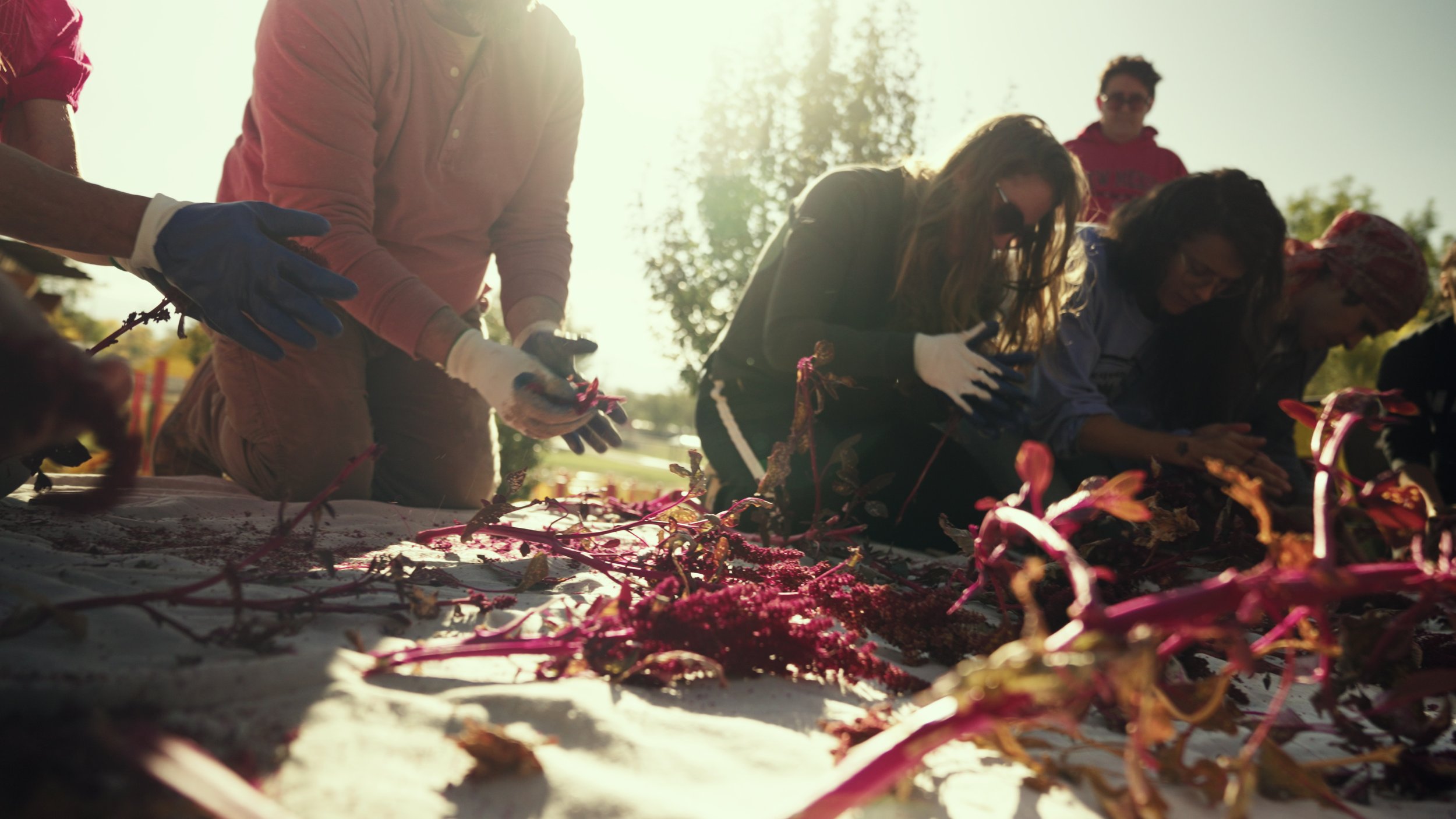
So, How Do We Move Forward?
Photo: Trees, Water & People
This report aims to lift up what our partners have shared with us and underscores both the challenges grant partners face, and the opportunities for philanthropy to evolve—as well as a renewed opportunity to work together to deepen relationships alongside impact. While traditional funding models have supported valuable work, they often fall short of addressing systemic issues or empowering communities to create their own solutions. To move forward, philanthropy must embrace trust, flexibility and long-term thinking while engaging with broader systems of change, even within ourselves.
There is another important dynamic to consider: Philanthropy alone cannot address society's most pressing needs. According to a report from the United Philanthropy Forum, for every $1,000 of inherited wealth, the inheritor gives $0.76 to charity. Despite an exponential increase in giving over the past forty years, it has failed to make a significant dent in social and environmental issues and it is coming to light that these issues may persist due to entrenched assumptions that wealthy donors are best equipped to solve these challenges, and that the nonprofit sector can effectively stand in for government. We don’t believe this to be true.
From the beginning, the Mighty Arrow family and its core team believed the best people to decide how to use our philanthropic dollars are those that are doing the actual work. Our unrestricted, multi-year grants allow organizations to pursue new opportunities, respond to unexpected political or environmental events, hire key personnel, tap into the host of resources we’ve explored in this report or to simply buy their team's lunch.
Even so, we can do better. It’s why we launched the Mighty Partner Project. We listened and learned and we’re committed to allowing this symphony of stories to guide us in our grantmaking, but let me be clear: Our work does not stop there. This is not a one-off listening session, this is a continuous conversation. One that we’re humbled and honored to invest in as we build a brave new path forward—together, and leaving no one behind.
We’re proud to announce that Mighty Arrow will launch two new pilot project funds:
Nurturing Leadership Grants will support those amazing Mighty Partners already in our portfolio. For those seeking funds to gather their teams, create leadership opportunities, or simply to provide wellness funds for their staff. This is an additional offering beyond our existing unrestricted grants for those Mighty Partners with an annual operating budget under $2 million and an effort to nurture the next generation of leaders.
Transformational Capacity Grants will break down traditional barriers to foundation funding by creating a Mighty Partner-referral application for young organizations (between 3-7 years old) located in the State of Colorado or the Bay Area of California, with an annual operating budget under $1 million, and aligns with Mighty Arrow’s focus areas. Philanthropic connections are historically gatekept and it is our intention to begin opening some doors.
Photo: American Forests
Additionally, thanks to the input of our Mighty Partners, together we have identified unexpected allies as well as important and exciting opportunities to spark conversations and potentially collaborations. We’re excited to intentionally invest in stoking those opportunities and share with our broader community. Stay tuned for more.
Finally, and most importantly, we are grateful to the partners who have shared their stories, their successes and their challenges with us. We aim to bring some of these stories to light in the coming year to amplify the incredible dedication, ingenuity and joy that our Mighty Partners bring to their work of building a brighter future for all of us.
The path forward requires courage and intentional action. While the current philanthropic landscape has its shortcomings, the opportunity for transformative change is fun, creative and ignites deeper impact within our work. To fellow funders, we ask that you treat ‘philanthropy’ as a verb. Let this report serve as a call to action and a vital reminder that when we simply listen many of the answers we seek are right there for the taking.
So we’ll end how we began: How can we take better care of the people doing this work? How can we all be better partners in this work?
We can’t wait to hear what you find out. Tell us: MightyPartners@mightyarrow.org
Photo: Amplifier
Thank you to all the Mighty Partners who contributed to this report:
















